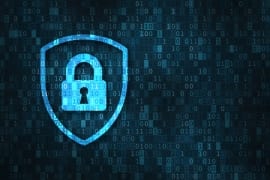Pharmaceutical companies have been leveraging the power of Big Data for over a decade, utilizing ever more powerful computing devices to make logical leaps and data correlations that would have been impossible in previous years. Having immediate access to this scale of information allows scientists to build more quickly upon the work of others while also providing an improved experience for patients at healthcare locations. There is no question: cloud-based computing is having a dramatic impact on life sciences and pharmaceutical businesses.
Providing Secure and Immediate Access to Crucial Data
Electronic Health Records (EHR) are a standard requirement for organizations offering healthcare to the public and many support businesses besides. Being able to quickly and securely access this information is crucial to success — and an expectation in terms of providing proactive patient care. Visitors to your healthcare facilities are not patient with filling out paper forms and providing the same information multiple times. With the proliferation of local options for healthcare, clinics need this type of access to cloud-based storage and application data in order to be successful.
Pharma Benefits from Flexible, Scalable Cloud Solutions
It’s not unusual for pharmaceutical businesses to store and access petabytes of information on a regular basis — molecular and gene sequencing and results of clinical studies, just to name a few. The pharmaceutical industry has become adept at harnessing the power of the cloud to drive their analyses, hoping to shave time off of the extensive requirements of bringing a new drug to market. Anything that will speed the approximately 10-year review cycle that can cost billions of dollars has the potential to revolutionize the pharmaceutical industry, but there is still a great deal of work to be done before the cloud is fully utilized by these organizations. Turning data into insight is a key requirement for life sciences businesses, which entails tying together disparate software platforms and data sources in a way that provides greater transparency to analysts and scientists alike.
Streamlining Operations and Improving Security
Resource demands can fluctuate based on the stage of any business, and having your infrastructure based in the cloud allows organizations to scale quickly when needed. Providing your business with quick access to consolidated information can help streamline operations by digitizing workflows and creating a more cohesive view of the business. The enhanced focus on platform security, data privacy and compliance requirements demand that life sciences businesses increase their ability to store, secure process and analyze increasingly complex data sets.
Coretelligent has a deep commitment to providing healthcare and life sciences organizations with the secure advanced technology that you need to remain dominant in today’s highly competitive marketplace. See how our proactive technology professionals will work closely with your organization to define your specific needs and create the cohesive solutions that will support the security and compliance needs of your business both now and in the future. Contact us today at 855-841-5888 or fill out our online contact form for a quick response to your requests.












